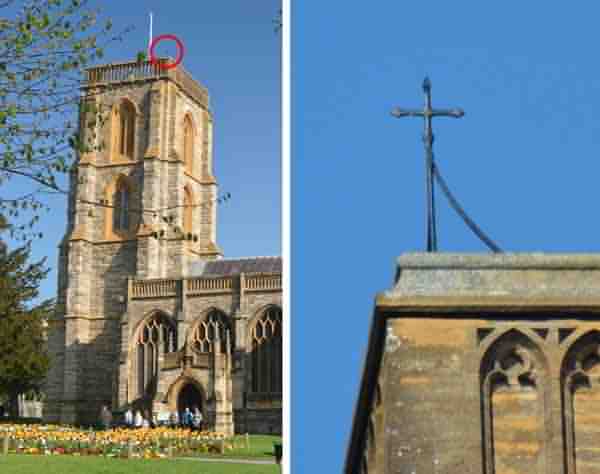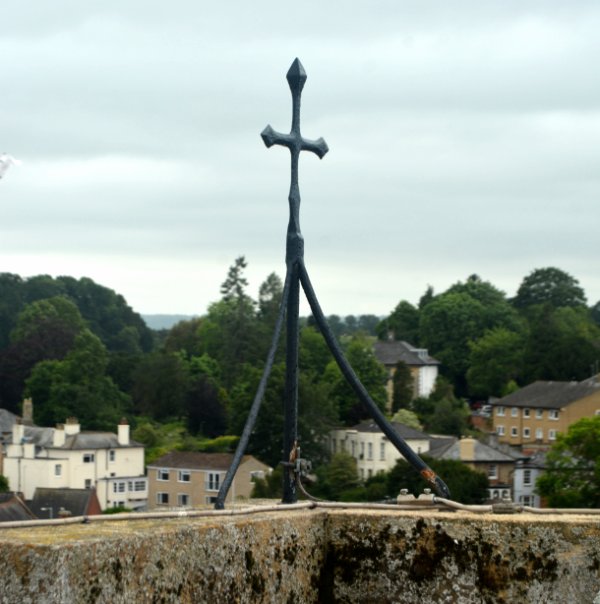CONVENT OF SYON
convent of Syon
Lords of Yeovil from 1420 until the Dissolution
In 1415, the year of Henry V’s (reigned 1413-1422) victory over the French at Agincourt, the king personally laid the foundation stone of the Convent of Syon at Isleworth, Middlesex. In 1420 the Abbess and 35 nuns took possession of the convent, properly known as ‘The Monastery of St Saviour and St Bridget of Syon of the Order of St Augustine’. It was built as part of “The King's Great Work”. Joan North was elected to be the first Abbess and the social standing of the nuns was exceptionally high. The choir sisters were drawn from the nobility, the gentry, and London merchant families, whilst the few lay sisters probably came from the London area.
The King's original foundation consisted of 85 persons comprising sixty women (the Abbess and 59 nuns) and twenty five men (1 Confessor General, 12 priests, 4 deacons and 8 lay brethren). The different sexes were “to dwell in separate habitations, to wit the said abbess and sisters within one court by themselves and the said confessor and brothers in a separate court by themselves, within the same monastery”. The legal corporate entity was “The Abbess and Convent” which could transact business by affixing its single corporate seal. While the Convent consisted of the Abbess and nuns together with the Confessor and all the religious men, the Abbess was in overall charge.
In order to part-support the convent, Henry granted them the rectory of St John the Baptist and lordship of the Borough of Yeovil together with ‘two acres of land in Huish and a portion in Martock’. For the next 114 years, until the Dissolution of the Monasteries in 1534 by Henry VIII, Yeovil came under the jurisdiction of the Abbess and was administered locally by a resident bailiff in conjunction with the Portreeve and Burgesses.
The Borough
of Yeovil was
just one of the
many scattered
possessions
bestowed on the
Convent. This,
in itself,
presented
complicated
problems of
management and
the
administrative
staffs of Syon
gives a good
example of the
usual system
adopted by
nunneries. The
business affairs
of the abbey
were the
responsibility
of the abbess,
who delegated
the
administration
to the
treasuress and
undertreasuress.
The nuns were
advised and
assisted in
their work by a
lay central
staff, the head
of which was the
chief steward.
Two
distinguished
men held this
post early in
the16th century;
Sir Richard
Sutton, a lawyer
in the Inner
Temple, probably
carried out his
duties in
person, since he
had a room at
Syon and took
great interest
in the Order.
Sometime after
Sutton's death
in 1524 Thomas
Cromwell held
the office,
although the
actual work was
performed by
Thomas Watson,
steward of the
household and
steward general
of all the
lordships of the
monastery. The
central staff
was completed by
a
receiver-general,
an auditor and a
clerk. Most of
the lands owned
by the Convent
were farmed
through
bailiffs. In
most counties a
steward was in
charge and
supervised the
work of the
minor officials
for each manor.
The Abbesses of
Syon and,
consequently,
Lords of Yeovil
from 1420 until
the Dissolution
in 1534 were :-
- Joan
North,
elected
1420; died
1433
- Maud
Muston,
elected
1433; died
1447
- Margaret
Ashby,
occurs 1448;
died 1456
-
Elizabeth
Muston, died
1497
-
Elizabeth
Gibbs, died
1518
-
Constance
Brown,
elected
1518; died
1520
- Agnes Jordan, died 1545
After the
Reformation the
expelled
community did
not disband, but
exiled itself to
the Netherlands,
from where they
were recalled
briefly to Syon
following the
accession of the
catholic Queen
Mary (reigned
1553–1558) in
1553. On the
accession of
Queen Elizabeth
(reigned
1558–1603) in
1558 an Act of
Parliament was
passed annexing
and
re-dissolving
certain
religious
houses,
including Syon,
whereupon the
nuns obtained
royal license to
leave England,
eventually
settling in
Lisbon,
Portugal, where
they arrived in
1594.
The Lisbon community returned to England in 1861, settling first in Spetisbury, Dorset, moving in 1887 to Chudleigh, Devon and moving again in 1925 to its current location near South Brent, Devon. The religious community, or Convent, of Syon has the distinction of being the only English one that survived the Reformation in unbroken form to the present day.
gallery

This small iron cross, fixed to the eastern parapet of St John's church tower, indicated that the church was exempt from taxation while the borough was held by the Convent of Syon (between 1420 and 1534).

... and photographed from the tower roof in 2021.
